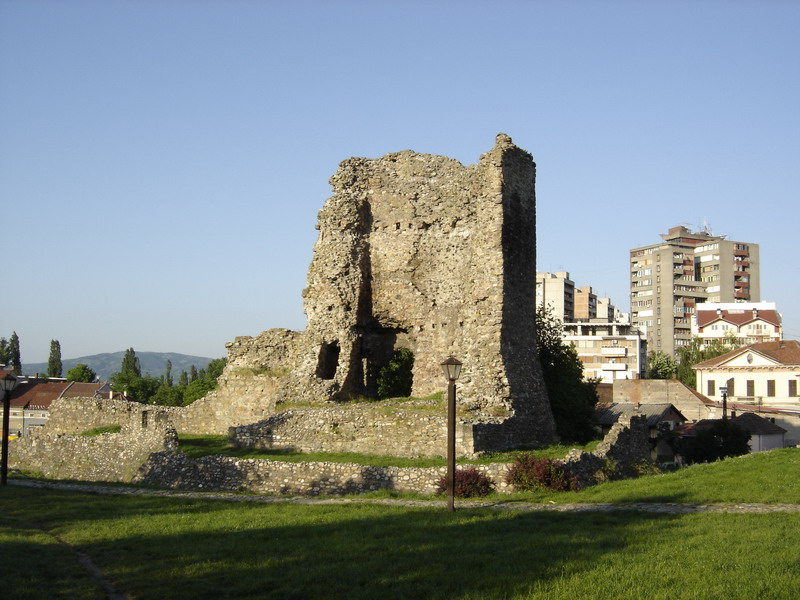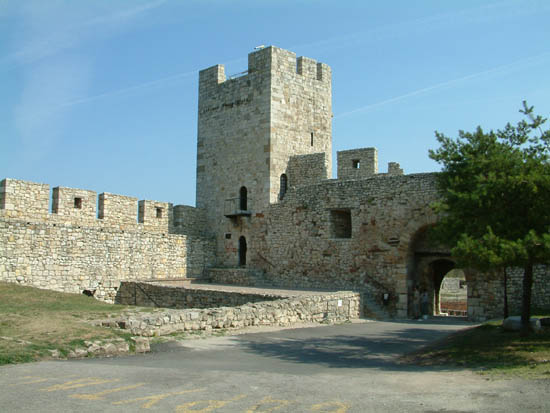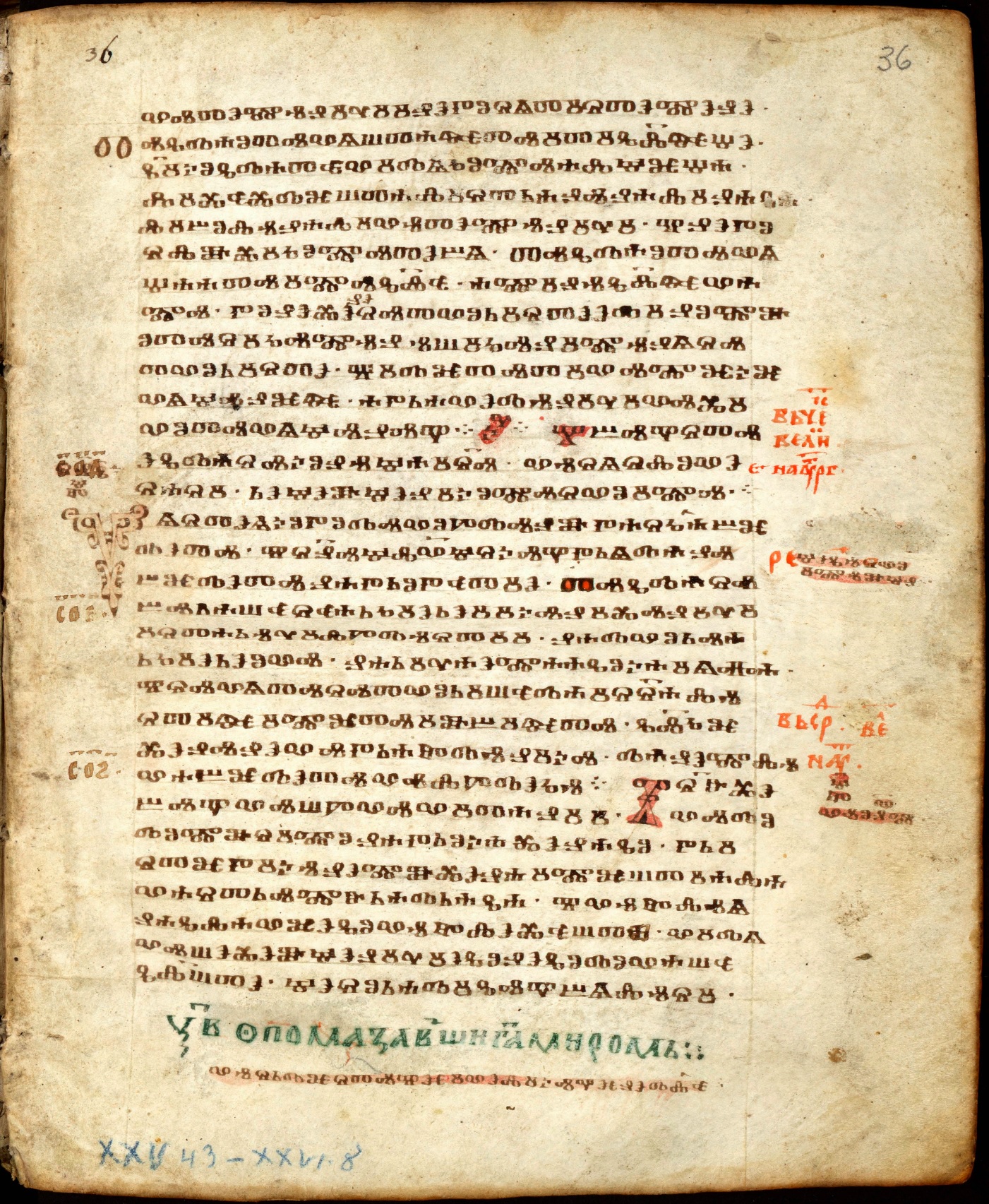|
Life Of Despot Stefan Lazarevi─ć
The ''Life of Despot Stefan Lazarevi─ć'' ( sr, ą¢ąĖą▓ąŠčé ą┤ąĄčüą┐ąŠčéą░ ąĪč鹥čäą░ąĮą░ ąøą░ąĘą░čĆąĄą▓ąĖčøą░, ą¢ąĖčéąĖčśąĄ ą┤ąĄčüą┐ąŠčéą░ ąĪč鹥čäą░ąĮą░ ąøą░ąĘą░čĆąĄą▓ąĖčøą░) is a biography of Serbian ruler Stefan Lazarevi─ć authored by Constantine of Kostenets ("the Philosopher") ca. 1431. The biography had been ordered by Serbian Patriarch Nikon following the death of Despot Stefan. That order was only fulfilled four years later, when allegedly Despot Stefan himself appeared in Constantine's dream. The biography is regarded as one of the most interesting in the medieval Serbian literature because it contains not only facts about the Despot's life, but also geographic information and thorough descriptions of numerous historical events. Constantine was apparently inspired by Byzantine chronicles. The work begins with a geographic description of Serbia's natural beauties, going on to describe its residents, praising their character but also mourning their forthcoming fall to the Tu ... [...More Info...] [...Related Items...] OR: [Wikipedia] [Google] [Baidu] |
Stefan Lazarevi─ć
Stefan Lazarevi─ć ( sr-Cyrl, ąĪč鹥čäą░ąĮ ąøą░ąĘą░čĆąĄą▓ąĖčø, 1377 ŌĆō 19 July 1427), also known as Stefan the Tall ( sr, ąĪč鹥čäą░ąĮ ąÆąĖčüąŠą║ąĖ / ''Stefan Visoki''), was the ruler of Serbia as prince (1389ŌĆō1402) and despot (1402ŌĆō1427), diplomat, legislator, ktetor, patron of the arts, poet and one of the founding members of the Order of the Dragon. The son of Prince Lazar Hrebeljanovi─ć, he was regarded as one of the finest knights and military leaders at that time. After the death of his father at Kosovo (1389), he became ruler of Moravian Serbia and ruled with his mother Milica (a Nemanji─ć), until he reached adulthood in 1393. Stefan led troops in several battles as an Ottoman vassal, until asserting independence after receiving the title of ''despot'' from the Byzantines in 1402. Becoming a Hungarian ally in 1403ŌĆō04, he received large possessions, including the important Belgrade and Golubac Fortress. He also held the superior rank in the chivalric Order of t ... [...More Info...] [...Related Items...] OR: [Wikipedia] [Google] [Baidu] |
Serbian Despotate
The Serbian Despotate ( sr, / ) was a medieval Serbian state in the first half of the 15th century. Although the Battle of Kosovo in 1389 is generally considered the end of medieval Serbia, the Despotate, a successor of the Serbian Empire and Moravian Serbia, lasted for another 60 years, experiencing a cultural and political renaissance before it was conquered by the Ottomans in 1459. Before its conquest the Despotate was a tributary state of the neighbouring Byzantine Empire, Ottoman Empire, and Kingdom of Hungary, all of which considered it to be part of their sphere of influence. After 1459, political traditions of the Serbian Despotate continued to exist in exile, in the medieval Kingdom of Hungary, with several titular despots of Serbia, who were appointed by kings of Hungary. The last titular Despot of Serbia was Pavle Baki─ć, who fell in the Battle of Gorjani. History Origins After Prince Lazar Hrebeljanovi─ć was killed in the Battle of Kosovo on June 28, 1389, his ... [...More Info...] [...Related Items...] OR: [Wikipedia] [Google] [Baidu] |
Cyrillic Manuscripts
, bg, ą║ąĖčĆąĖą╗ąĖčåą░ , mk, ą║ąĖčĆąĖą╗ąĖčåą░ , russian: ą║ąĖčĆąĖą╗ą╗ąĖčåą░ , sr, čøąĖčĆąĖą╗ąĖčåą░, uk, ą║ąĖčĆąĖą╗ąĖčåčÅ , fam1 = Egyptian hieroglyphs , fam2 = Proto-Sinaitic , fam3 = Phoenician , fam4 = Greek script augmented by Glagolitic , sisters = , children = Old Permic script , unicode = , iso15924 = Cyrl , iso15924 note = Cyrs (Old Church Slavonic variant) , sample = Romanian Traditional Cyrillic - Lord's Prayer text.png , caption = 1780s Romanian text (Lord's Prayer), written with the Cyrillic script The Cyrillic script ( ), Slavonic script or the Slavic script, is a writing system used for various languages across Eurasia. It is the designated national script in various Slavic, Turkic, Mongolic, Uralic, Caucasian and Iranic-speaking countries in Southeastern Europe, Eastern Europe, the Caucasus, Central Asia, North Asia, and East Asia. , around 250 million people in Eurasia use Cyrillic a ... [...More Info...] [...Related Items...] OR: [Wikipedia] [Google] [Baidu] |
Serbian Manuscripts
This is a list of Serbian manuscripts ( sr, ąĪčĆą┐čüą║ąĖ čĆčāą║ąŠą┐ąĖčüąĖ), containing important works attributed to Serbia or Serbs. The majority of works are theological, with a few biographies and constitutions. The works were written in Cyrillic, except some early works in the Glagolitic script. The number of early Serbian manuscripts, that is, those made before the end of the 14th century, is estimated at 800ŌĆō1,000. The number of Serbian manuscripts dating between the 12th and 17th centuries that are located outside Serbia is estimated at 4,000ŌĆō5,000. The largest number of the manuscripts are located in Europe. The largest and most important collection is housed at the Hilandar on Mount Athos. Next, the second largest collection is most likely found in Russia, where hundreds of manuscripts are held. More than a thousand of medieval manuscripts were destroyed during the German bombing of Belgrade (1941). The Digital National Library of Serbia (NBS) has digitalized several ... [...More Info...] [...Related Items...] OR: [Wikipedia] [Google] [Baidu] |
15th-century History Books
The 15th century was the century which spans the Julian dates from 1 January 1401 ( MCDI) to 31 December 1500 ( MD). In Europe, the 15th century includes parts of the Late Middle Ages, the Early Renaissance, and the early modern period. Many technological, social and cultural developments of the 15th century can in retrospect be seen as heralding the "European miracle" of the following centuries. The architectural perspective, and the modern fields which are known today as banking and accounting were founded in Italy. The Hundred Years' War ended with a decisive French victory over the English in the Battle of Castillon. Financial troubles in England following the conflict resulted in the Wars of the Roses, a series of dynastic wars for the throne of England. The conflicts ended with the defeat of Richard III by Henry VII at the Battle of Bosworth Field, establishing the Tudor dynasty in the later part of the century. Constantinople, known as the capital of the wor ... [...More Info...] [...Related Items...] OR: [Wikipedia] [Google] [Baidu] |
Books About Monarchs
A book is a medium for recording information in the form of writing or images, typically composed of many pages (made of papyrus, parchment, vellum, or paper) bound together and protected by a cover. The technical term for this physical arrangement is ''codex'' (plural, ''codices''). In the history of hand-held physical supports for extended written compositions or records, the codex replaces its predecessor, the scroll. A single sheet in a codex is a leaf and each side of a leaf is a page. As an intellectual object, a book is prototypically a composition of such great length that it takes a considerable investment of time to compose and still considered as an investment of time to read. In a restricted sense, a book is a self-sufficient section or part of a longer composition, a usage reflecting that, in antiquity, long works had to be written on several scrolls and each scroll had to be identified by the book it contained. Each part of Aristotle's ''Physics'' is called a bo ... [...More Info...] [...Related Items...] OR: [Wikipedia] [Google] [Baidu] |
History Of The Serbian Orthodox Church
The Serbian Orthodox Church ( sr-Cyrl, ąĪčĆą┐čüą║ą░ ą┐čĆą░ą▓ąŠčüą╗ą░ą▓ąĮą░ čåčĆą║ą▓ą░, Srpska pravoslavna crkva) is one of the autocephalous ( ecclesiastically independent) Eastern Orthodox Christian churches. The majority of the population in Serbia, Montenegro and the Republika Srpska entity of Bosnia and Herzegovina are members of the Serbian Orthodox Church. It is organized into metropolitanates and eparchies, located primarily in Serbia, Bosnia and Herzegovina, Montenegro, and Croatia. Other congregations are located in the Serb diaspora. The Serbian Patriarch serves as first among equals in his church. The current patriarch is Porfirije, enthroned on 19 February 2021. The Church achieved autocephalous status in 1219, under the leadership of Saint Sava, becoming the independent Archbishopric of ┼Įi─Źa. Its status was elevated to that of a patriarchate in 1346, and was known afterwards as the Serbian Patriarchate of Pe─ć. This patriarchate was abolished by the Ottoman E ... [...More Info...] [...Related Items...] OR: [Wikipedia] [Google] [Baidu] |
Lazarevi─ć Dynasty
The House of Lazarevi─ć ( sr-Cyrl, ąøą░ąĘą░čĆąĄą▓ąĖčø, Lazarevi─ći / ąøą░ąĘą░čĆąĄą▓ąĖčøąĖ, ) was a Serbs, Serbian medieval royal family, which ruled Moravian Serbia and the Serbian Despotate. The dynasty began with Lazar Hrebeljanovi─ć, son of Pribac Hrebeljanovi─ć-a noble at the court of Du┼Īan the Mighty. Lazar married Princess Milica, Milica, supposedly a member of the reigning Nemanji─ć dynasty, and was later given the title "Knez" by List of Serbian monarchs, Serbian Emperor Uro┼Ī the Weak. He gained lands in Central Serbia and through his ties with the Nemanji─ćs he became the regent of Moravian Serbia. In the Battle of Kosovo against the Ottoman Empire, Lazar was killed and Serbia became a vassal state, leading to the end of Serbian sovereignty. Monarchs Rulers of Moravian Serbia from 1371 to 1427. *Lazar Hrebeljanovi─ć (1371ŌĆō1389) *Stefan Lazarevi─ć (1389ŌĆō1427) Family tree *Pribac **Draginja, who married ─īelnik Musa (magnate), Musa, founder of Musi─ć noble family ... [...More Info...] [...Related Items...] OR: [Wikipedia] [Google] [Baidu] |
1430s Books
143 may refer to: * 143 (number), a natural number * AD 143, a year of the 2nd century AD * 143 BC, a year of the 2nd century BC * ''143'' (EP), a 2013 EP by Tiffany Evans * ''143'' (album), a 2015 album by Bars and Melody * ''143'' (2004 film), a 2004 Indian Telugu film * ''143'' (2022 film), a 2022 Indian Marathi film *''143'', a song by Set It Off from their 2009 EP, ''Calm Before the Storm'' *" 1-4-3 (I Love You)", a 2013 song by Henry Lau * 143 (West Midlands) Brigade * 143 Records, record label of producer David Foster * KiYa 143, a locomotive type See also * List of highways numbered 143 * {{numberdis ... [...More Info...] [...Related Items...] OR: [Wikipedia] [Google] [Baidu] |
Constantine Of Kostenets
Constantine of Kostenets ( bg, ąÜąŠąĮčüčéą░ąĮčéąĖąĮ ąÜąŠčüč鹥ąĮąĄčćą║ąĖ, Konstantin Kostenechki; born ca. 1380, died after 1431), also known as Constantine the Philosopher ( sr, ąÜąŠąĮčüčéą░ąĮčéąĖąĮ ążąĖą╗ąŠąĘąŠčä), was a medieval Bulgarian scholar, writer and chronicler, who spent most of his life in the Serbian Despotate. He is best known for his biography of Serbian despot Stefan Lazarevi─ć, which George Ostrogorsky described as "the most important historical work of old Serbian literature",Ostrogorsky, ''History of the Byzantine State'', translated by Joan Hussey, revised edition, (New Brunswick: Rutgers University Press, 1969), p. 471 and for writing the first Serbian philological study, ''Skazanije o pismenah'' (A History on the Letters). He followed the writing style of the Old Serbian ''vita'', first made popular in the Serbian scriptoria of the 12th century. Biography Constantine was born in Bulgaria, probably in Kostenets. In his youth, he attended school in the capital ... [...More Info...] [...Related Items...] OR: [Wikipedia] [Google] [Baidu] |
15th Century In Serbia
15 (fifteen) is the natural number following 14 and preceding 16. Mathematics 15 is: * A composite number, and the sixth semiprime; its proper divisors being , and . * A deficient number, a smooth number, a lucky number, a pernicious number, a bell number (i.e., the number of partitions for a set of size 4), a pentatope number, and a repdigit in binary (1111) and quaternary (33). In hexadecimal, and higher bases, it is represented as F. * A triangular number, a hexagonal number, and a centered tetrahedral number. * The number of partitions of 7. * The smallest number that can be factorized using Shor's quantum algorithm. * The magic constant of the unique order-3 normal magic square. * The number of supersingular primes. Furthermore, * 15 is one of two numbers within the ''teen'' numerical range (13-19) not to use a single-digit number in the prefix of its name (the first syllable preceding the ''teen'' suffix); instead, it uses the adjective form of five (''fif' ... [...More Info...] [...Related Items...] OR: [Wikipedia] [Google] [Baidu] |
Medieval Serbian Literature
Medieval Serbian literature or Old Serbian literature ( sr, ąĪčéą░čĆą░ čüčĆą┐čüą║ą░ ą║čÜąĖąČąĄą▓ąĮąŠčüčé) refers to the literature written in medieval forms of Serbian language, up to the end of the 15th century, with its traditions extending into the early modern period. Background Medieval Serbia is an heir of Constantine the Great's Byzantium, the eastern part of the Roman Empire. Serbian Old Church Slavonic literature was created on Byzantine model, and at first church services and biblical texts were translated into Slavic, and soon afterward other works for Christian life values from which they attained necessary knowledge in various fields (including Latin works). Although this Christian literature educated the Slavs, it did not have an overwhelming influence on original works. Instead, a more narrow aspect, the genres, and poetics with which the cult of saints could be celebrated were used, owing to the Slavic celebration of Cyril and Methodius and their Slav disciples a ... [...More Info...] [...Related Items...] OR: [Wikipedia] [Google] [Baidu] |








.jpg)